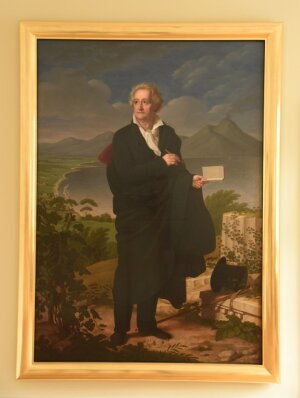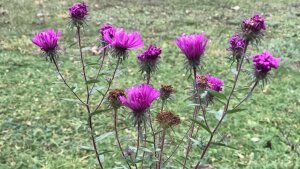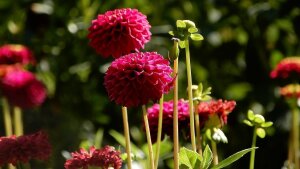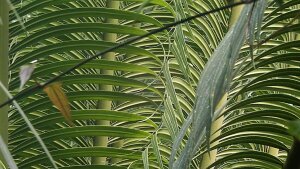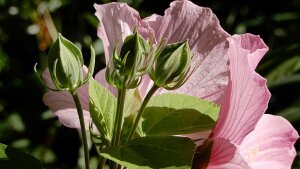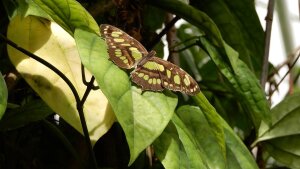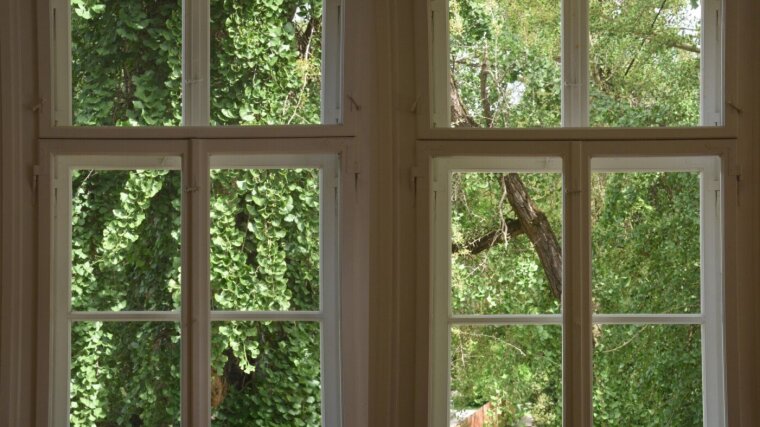
Signet of the Goethe-Laboratorium Graphic: Philipp Wiegandt (Goldwiege Weimar)
Graphic: Philipp Wiegandt (Goldwiege Weimar)Johann Wolfgang von Goethe (1749–1832) was not only a poet and statesman, but also a committed natural scientist. From the second half of the 1770s onwards, his active interest in the sciences developed from geology and mineralogy to anatomy, botany, the theory of colors and meteorology.
Titled Mobile Order, the new permanent exhibition shows Goethe's commitment to the natural sciences, which is closely tied to the University of Jena. Here, he succeeds in proving the existence of the intermaxillary bone in humans, here, he not only establishes the Botanical Garden, but also builds the entire infrastructure for scientific research by developing collections and institutes.
Goethe as poet and artist in front of Mount Vesuvius. Oil painting by Heinrich Christoph Kolbe, 1822-26, University of Jena.
Image: Anne Günther (University of Jena)The exhibition renders present fundamentals of Goethe's study of nature (morphology and metamorphosis theory) and invites visitors to perceive with awareness. Light is shed on the research problems and methods of Goethe's work in geology, anatomy and botany. Using selected exemplary objects problems and methods in meteorology, paleontology, and color theory are illustrated as well. At the same time, the exhibition brings the connection between the observation of nature and poetry into focus:
„You must, when contemplating nature,
Attend to this, in each and every feature: There's nought outside and nought within,
For she is inside out and outside in.
Thus will you grasp, with no delay,
The holy secret, clear as day.“
Goethe’s morphological field of experimentation can still be explored today in the collections he established at the University of Jena (in the Mineralogical Collection de, the Anatomical Collection de, or the Phyletic MuseumExternal link) and just as much in the Botanical Garden.
In close cooperation with physician August Johann Georg Karl Batsch (1761–1802) Goethe led it’s construction at Fürstengraben in 1794 according to morphological criteria [later it was expanded together with Franz Joseph Schelver (1778–1832) and Friedrich Siegmund Voigt (1781–1834)].
In his “retreat on the flower- and plant-covered hill,” in midst of a “truly splendid vegetation,” Goethe felt particularly at ease—as he noted in letters from 1817—and received great inspiration. That year, he begins to publish the journal On Natural Science in General, Especially on Morphology (1817–1824). In the issues of Zur Morphologie, Goethe undertakes an interdisciplinary and historico-scientific presentation of his theory and practice of forms.
The permanent exhibition is closely integrated into teaching and research at the University of Jena. In cooperation and exchange with Schiller’s Garden House, the Goethe Laboratory hosts a program of events that explores and reflects on the relationships between the humanities, sciences, and arts in a contemporary context.

